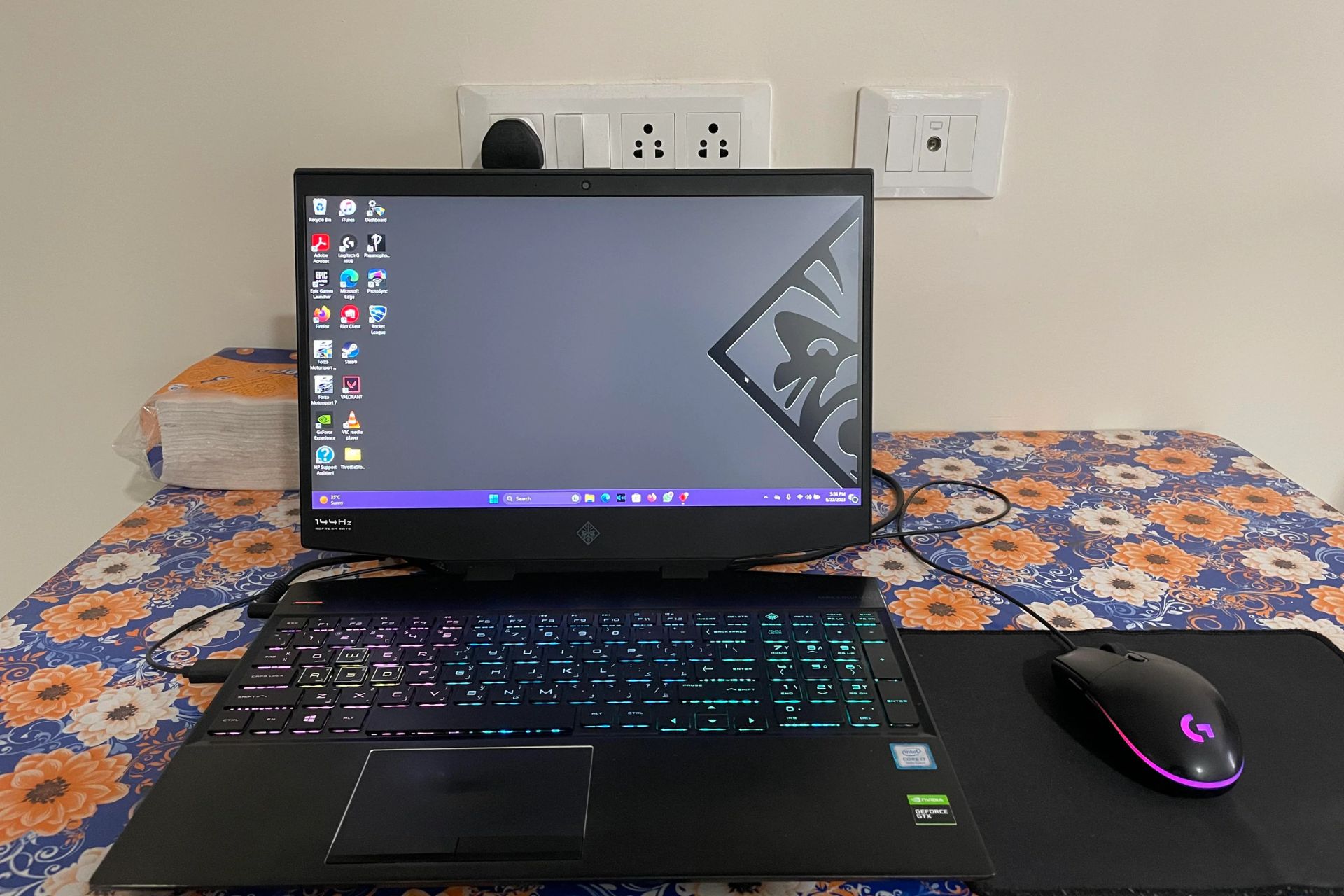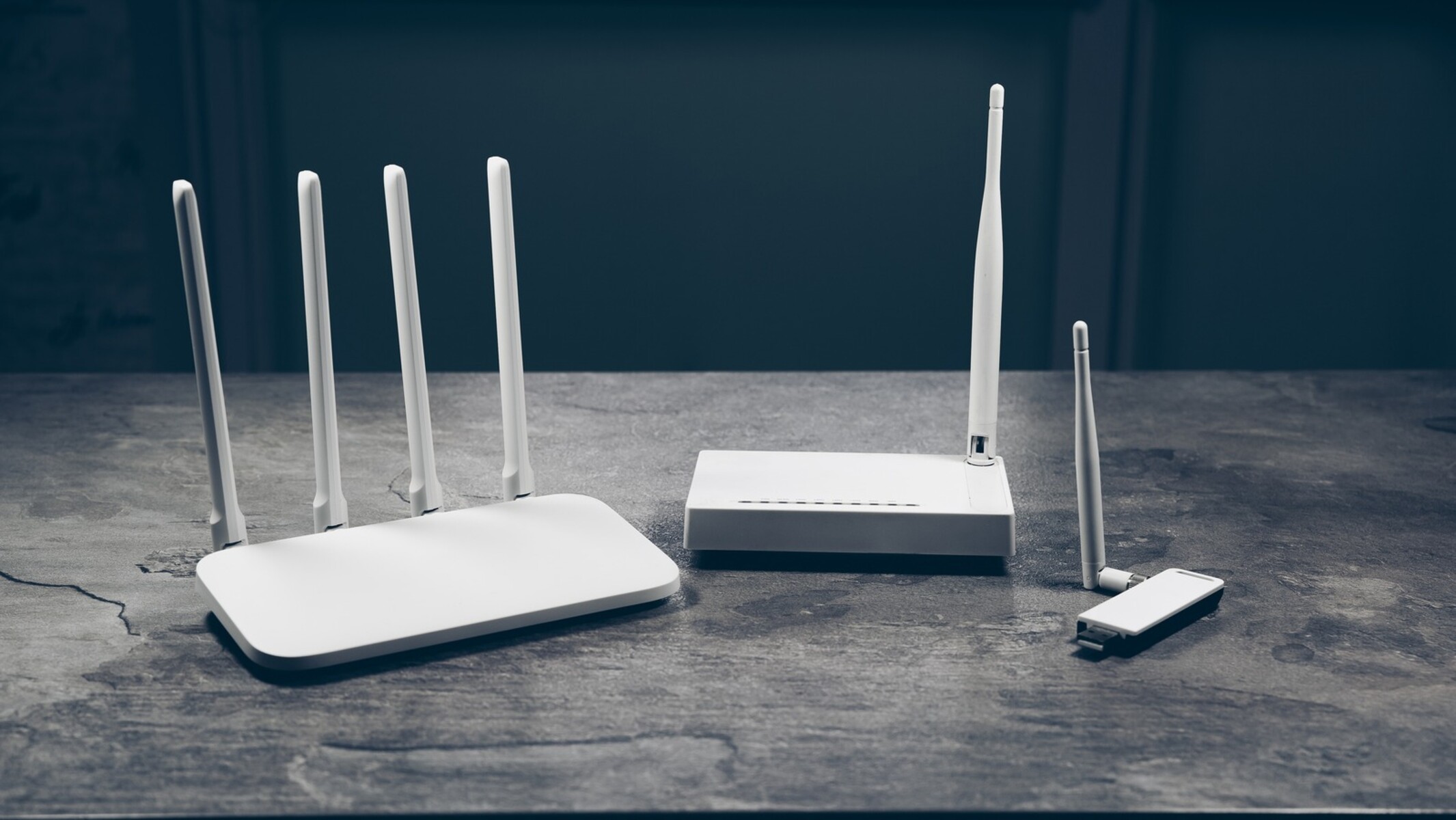Introduction
Welcome to the world of home security systems! With the rising concern for safety and protection, the demand for home security systems has skyrocketed in recent years. As a seller in this industry, you have a unique opportunity to provide homeowners with peace of mind and protect their valuable assets. However, entering the market and successfully selling home security systems requires careful planning, research, and effective marketing strategies.
In this comprehensive guide, we will walk you through the ten essential steps to selling home security systems. Whether you are just starting out or looking to refine your sales approach, these steps will help you make informed decisions, reach potential customers, and close the deal.
But before we dive into the nitty-gritty details, it’s crucial to understand the market for home security systems. The security industry is vast, with various products, brands, and services available. Homeowners have unique needs and preferences when it comes to safety. By gaining a solid understanding of the market, you can position yourself as a trusted expert who can cater to their specific requirements.
Throughout this guide, we will provide you with practical tips and insights to help you navigate the world of home security systems successfully. From researching your options to delivering a compelling sales pitch and providing top-notch customer service, we’ve got you covered.
So, if you’re ready to take your home security system sales to the next level, let’s get started with step one: understanding the market for home security systems.
Step 1: Understand the Market for Home Security Systems
Before you start selling home security systems, it’s important to have a clear and comprehensive understanding of the market. This involves conducting thorough research and staying updated with the latest trends and developments within the security industry.
One crucial aspect to consider is the size and scope of the market. Home security systems cater to a wide range of customers, including homeowners, renters, and businesses. Understanding your target audience will help you tailor your sales approach and marketing strategies to meet their specific needs.
Another key factor to analyze is the competitive landscape. Take the time to research and identify your direct competitors. Look into their pricing, features, reputation, and customer reviews. This insights will enable you to differentiate your offerings from that of your competitors and highlight the unique value you can provide.
It’s also essential to keep an eye on emerging trends and technologies in the security industry. Innovations such as smart home integration, wireless systems, and advanced monitoring capabilities are gaining popularity among consumers. Stay informed about these advancements to ensure that you can offer the latest and most sought-after products.
In addition to researching the market, it’s also crucial to stay up-to-date with relevant regulations and industry standards. This knowledge will help you navigate any legal requirements or compliance issues that may arise in your sales process. Keeping your finger on the pulse of changes in the industry will show potential customers that you are knowledgeable and trustworthy.
To gain further insights into the market, consider reaching out to industry experts, attending trade shows and conferences, and networking with other professionals in the field. These resources can provide valuable information and connections that can support your sales efforts.
By understanding the market for home security systems, you will be equipped with the knowledge and insights required to effectively position your offerings, target the right customers, and communicate the value of your products and services. With this solid foundation, you can move on to the next step: researching different home security system options.
Step 2: Research Different Home Security System Options
When it comes to selling home security systems, it’s important to have a thorough understanding of the various options available in the market. This step requires conducting extensive research to identify the different types of home security systems, their features, and the benefits they offer to customers.
Start by exploring the different types of home security systems, such as wireless systems, hardwired systems, and do-it-yourself (DIY) systems. Each type comes with its own set of advantages and disadvantages, so it’s crucial to understand how they function and which may be best suited to your customers’ needs.
Next, delve into the features and components of home security systems. These may include door and window sensors, motion detectors, surveillance cameras, control panels, and remote access capabilities. Familiarize yourself with the functionalities of each component and how they work together to provide comprehensive security for homes.
Consider the scalability of the systems as well. Customers may have varying security needs, so it’s important to offer solutions that can be expanded or customized as required. This flexibility gives customers peace of mind, knowing that they can adapt and upgrade their system if their security requirements change in the future.
Diving deeper into your research, explore the different brands and manufacturers of home security systems. Look for established and reputable companies with a track record of quality products and reliable customer support. Familiarize yourself with the unique selling points of each brand and how they differentiate themselves in the market.
Customer reviews and feedback are also valuable sources of information. Read reviews, testimonials, and case studies to gain insights into the experiences and satisfaction levels of actual users. This information can help you identify potential strengths and weaknesses of specific home security systems and tailor your sales approach accordingly.
Finally, consider the pricing structures and packages offered by different providers. Compare the costs and value for money of each system to determine which options will meet both your customers’ needs and their budgetary constraints. By having a variety of system options at different price points, you can cater to a wider range of potential customers.
By conducting thorough research on the different home security system options available, you will not only enhance your product knowledge but also be able to guide customers towards the most suitable solutions for their specific requirements. This understanding will be invaluable as you move forward to the next step: determining your target audience and their needs.
Step 3: Determine Your Target Audience and Their Needs
One of the key factors to successful selling is understanding your target audience and their unique needs when it comes to home security systems. By gaining insight into their specific requirements, you can tailor your sales approach and effectively communicate the value of your offerings.
Start by defining the demographics of your target audience. Consider factors such as age, income level, location, and homeownership status. Understanding these characteristics will help you create marketing campaigns and messages that resonate with your target customers.
Next, identify the primary concerns and pain points of your audience. Are they mostly concerned about break-ins and burglaries? Or are they more worried about fire or carbon monoxide threats? By understanding their concerns, you can position your home security systems as solutions to their specific needs.
It’s also essential to consider the lifestyle and habits of your target audience. Do they travel often or have a busy schedule? Are they tech-savvy and interested in smart home integration? This information will allow you to recommend suitable features and functionalities that align with their lifestyle and preferences.
Take advantage of market research tools and surveys to gather data and insights about your target audience. This can help validate your assumptions and further refine your understanding of their needs and preferences. You can also conduct focus groups or interviews with existing customers to gain firsthand feedback and testimonials.
Additionally, keep an eye on industry trends and changes in consumer behavior. As technology and security requirements evolve, so too will the needs and expectations of your target audience. Stay informed and adapt your offerings accordingly to stay ahead of the curve.
Once you have a clear understanding of your target audience and their needs, it’s time to tailor your sales approach and marketing strategies to effectively reach and engage them. This will be covered in the next steps, where we will explore how to choose the right home security system, craft a compelling sales pitch, and use effective marketing strategies to reach potential customers.
Step 4: Choose the Right Home Security System for Your Clients
Choosing the right home security system for your clients is crucial to their satisfaction and the success of your sales efforts. By understanding their specific needs and preferences, you can recommend the most suitable system and ensure they feel secure in their decision.
Start by gathering detailed information about your clients’ requirements. Conduct a thorough assessment of their property, considering factors such as its size, layout, and potential vulnerabilities. Are there multiple entry points that need to be secured? Do they have existing security infrastructure that needs to be integrated with the new system?
Consider the lifestyle and preferences of your clients as well. Some may prefer a wireless system that offers convenience and flexibility, while others may prefer a hardwired system for added reliability. Take note of any specific features or functionalities they are looking for, such as smart home integration or remote monitoring capabilities.
Based on the gathered information, narrow down your options to home security systems that meet their specific needs. Consider factors such as the range of coverage, ease of use, installation requirements, and customer support provided by different system providers.
When presenting the options to your clients, explain the features and benefits of each system in a clear and concise manner. Highlight how each system addresses their unique concerns and provides the level of security they require. If possible, provide visual aids or demonstrations to help them visualize how the system will work in their own home.
It’s also essential to be transparent about the costs involved. Provide your clients with a detailed breakdown of the pricing, including any upfront costs, monthly fees, and additional features or services they may opt for. Ensure that they have a clear understanding of the benefits they will receive in return for their investment.
During the decision-making process, encourage your clients to ask questions and address any concerns they may have. Listen attentively to their needs and provide guidance and reassurance as needed. Remember, building trust and rapport with your clients is essential for a successful sales process.
By carefully choosing the right home security system for your clients, you can ensure their satisfaction and provide them with the peace of mind they desire. In the next step, we will explore how to craft a compelling sales pitch to effectively communicate the value of your recommended system.
Step 5: Craft a Compelling Sales Pitch
A compelling sales pitch is the key to capturing the attention and interest of potential customers. By effectively communicating the value and benefits of your recommended home security system, you can persuade them to make a purchase. Here are some tips to help you craft a compelling sales pitch:
1. Grab their attention: Start your sales pitch with a strong hook to grab the attention of your audience. Highlight a stat or a compelling fact about home security or share a relatable story that resonates with their fears and concerns.
2. Understand their needs: Tailor your pitch to address the specific needs and pain points of your potential customers. Refer back to the information you gathered during the previous steps and emphasize how your recommended home security system can provide the solutions they are seeking.
3. Highlight the key features and benefits: Clearly explain the features of the home security system and how they directly benefit the customer. Emphasize aspects like 24/7 monitoring, mobile app access, quick emergency response, and the peace of mind that comes with a secure home environment.
4. Use storytelling: Weave storytelling into your pitch to make it more relatable and engaging. Share examples of how the system has helped previous customers or use hypothetical scenarios to illustrate the potential benefits and outcomes. This helps customers envision themselves benefiting from the system.
5. Demonstrate credibility: Establish yourself as a trusted expert in the field by showcasing your knowledge and experience. Share relevant testimonials, case studies, or industry recognitions to build trust with potential customers.
6. Address objections and concerns: Anticipate and address any objections or concerns the customer may have. Whether it’s about the cost, installation, or the effectiveness of the system, provide clear and concise answers that alleviate their doubts and reinforce the value of the investment.
7. Create a sense of urgency: Encourage customers to take action by creating a sense of urgency. Highlight limited-time promotions, exclusive deals, or the importance of securing their homes as soon as possible. This motivates customers to make a decision quickly.
8. Use visual aids: Utilize visual aids such as product demos, infographics, or before-and-after images to further illustrate the benefits of the home security system. Visuals can enhance understanding and leave a lasting impression on potential customers.
9. Tailor the pitch to the individual: Adapt your sales pitch to match the communication style, preferences, and concerns of each potential customer. Some may respond better to data and statistics, while others may appreciate a more personal and emotional approach. Flexibility is key in delivering a pitch that resonates.
10. End with a strong call to action: Close your sales pitch with a clear and compelling call to action, guiding customers on the next steps to take. Whether it’s scheduling a consultation, signing up for a trial, or making a purchase, make the call to action easy to understand and act upon.
By crafting a compelling sales pitch, you can effectively communicate the value and benefits of your recommended home security system to potential customers, increasing the likelihood of closing the sale. In the next step, we will explore effective marketing strategies to reach potential customers.
Step 6: Use Effective Marketing Strategies to Reach Potential Customers
Once you have a compelling sales pitch, it’s time to implement effective marketing strategies to reach potential customers. A well-planned and targeted marketing campaign can generate awareness, attract leads, and ultimately result in increased sales. Here are some strategies to consider:
1. Develop a strong online presence: Establish a professional website that showcases your home security systems and services. Optimize your website for search engines to increase visibility and organic traffic. Utilize social media platforms to engage with your target audience, share informative content, and promote your offerings.
2. Content marketing: Create valuable and informative content related to home security systems, such as blog articles, videos, and infographics. This positions you as an expert in the industry and provides valuable information to potential customers. Optimize your content with relevant keywords to improve search engine rankings.
3. Leverage local SEO: If you primarily serve a specific geographic area, optimize your online presence for local SEO. This involves using location-specific keywords, creating Google My Business profiles, and soliciting customer reviews. This helps potential customers in your area find you easily.
4. Utilize pay-per-click (PPC) advertising: Consider running PPC advertising campaigns on platforms such as Google Ads or social media channels like Facebook. Target specific keywords and demographics to reach potential customers who are actively searching for home security systems.
5. Email marketing: Build an email list of interested prospects and existing customers. Send regular newsletters, updates, and promotions to keep them engaged and informed. Personalize your emails to make them more relevant and attractive to recipients.
6. Referral programs: Encourage satisfied customers to refer their friends, family, and colleagues to your services. Offer incentives, such as discounts or free add-ons, to both the referrer and the referred customer. This can help generate word-of-mouth marketing and drive new leads.
7. Collaboration and partnerships: Seek opportunities to collaborate with complementary businesses, such as home improvement stores or real estate agencies. Cross-promote each other’s offerings or provide special offers to shared customers. This can expand your reach and increase credibility.
8. Attend trade shows and events: Participate in relevant industry trade shows, events, and conferences. Set up a booth or give presentations to showcase your home security systems and network with potential customers. Be prepared with informative materials and engaging demonstrations to attract attention.
9. Customer testimonials and case studies: Collect testimonials and create case studies showcasing the positive experiences of your satisfied customers. Display these on your website, social media, and marketing materials to build trust and credibility.
10. Analyze and optimize: Continuously monitor and analyze the results of your marketing strategies. Identify what is working well and where improvements can be made. Adjust your approach, messaging, and targeting based on data and feedback to optimize your marketing efforts.
By implementing these effective marketing strategies, you can raise awareness of your home security systems, attract potential customers, and ultimately increase sales. In the next step, we will explore building trust and credibility with potential buyers.
Step 7: Build Trust and Credibility with Potential Buyers
Building trust and credibility with potential buyers is essential in the sales process, especially when it comes to home security systems. Customers need to feel confident in your expertise and the reliability of your offerings. Here are some strategies to help you establish trust:
1. Provide exceptional customer service: Go above and beyond to deliver exceptional customer service at every touchpoint. Respond promptly to inquiries, address concerns, and provide clear and accurate information. By demonstrating your commitment to customer satisfaction, you build trust and establish a positive reputation.
2. Showcase positive customer reviews and testimonials: Display testimonials, reviews, and ratings from satisfied customers. Share these testimonials on your website, social media platforms, and marketing materials. Authentic and positive feedback from previous customers can significantly influence potential buyers’ trust in your products and services.
3. Offer guarantees and warranties: Provide guarantees or warranties on your home security systems. This reassures potential buyers that you stand behind your products and are confident in their quality and effectiveness. Clear guarantees or warranties help alleviate any concerns about product performance or durability.
4. Highlight your industry experience and expertise: Share your knowledge and expertise through informative blog articles, videos, or industry resources. Position yourself as a thought leader by providing valuable insights and advice related to home security. This establishes credibility and reinforces your status as a trusted professional.
5. Include relevant certifications and partnerships: Highlight any certifications or partnerships you have with reputable organizations in the security industry. These affiliations validate your expertise and can instill confidence in potential buyers regarding the quality and reliability of your offerings.
6. Demonstrate transparency: Be transparent about your pricing, service fees, and the features and limitations of your home security systems. Providing clear and accurate information upfront helps build trust and avoids any surprises or disappointments down the line.
7. Offer free consultations or demos: Provide potential buyers with the opportunity to have a free consultation or demo of your home security systems. This allows them to see firsthand the quality and capabilities of your offerings. It also shows your commitment to providing a personalized and tailored solution for their specific needs.
8. Maintain a professional and reliable online presence: Ensure that your website and social media profiles are professional and up to date. Regularly post informative content, respond promptly to messages and inquiries, and engage with potential buyers in a professional manner. A strong online presence reinforces your credibility and legitimacy as a business.
9. Provide references upon request: Consider offering references from satisfied customers upon request. Potential buyers may appreciate the opportunity to speak directly with someone who has firsthand experience with your home security systems. Positive testimonials from previous customers can go a long way in building trust.
10. Listen actively and address concerns: Listen attentively to the concerns and questions of potential buyers. Show that you genuinely care about their needs and are dedicated to finding the best solution for them. Address any concerns promptly and honestly, providing clear and helpful information to alleviate any doubts or uncertainties.
By employing these strategies to build trust and credibility, you can establish long-lasting relationships with potential buyers. They will feel confident in your products and services, increasing the likelihood of them choosing your home security systems. In the next step, we will explore how to effectively highlight the benefits and features of your home security systems to potential customers.
Step 8: Highlight the Benefits and Features of Your Home Security Systems
Effectively highlighting the benefits and features of your home security systems is crucial to persuading potential customers to choose your offerings. By clearly articulating how your products can improve their safety and peace of mind, you can demonstrate the value you bring. Here are some strategies to help you effectively highlight the benefits and features of your home security systems:
1. Emphasize the sense of security: Communicate how your home security systems provide a sense of security and protection for homeowners and their families. Highlight features such as 24/7 monitoring, instant alerts, and quick emergency response to showcase the immediate and reliable support your systems provide.
2. Showcase ease of use: Stress the user-friendly nature of your home security systems. Explain how the systems can easily be armed or disarmed, accessed remotely through a mobile app, and customized to fit the specific needs and lifestyle of each homeowner. Make it clear that your systems are designed to simplify home security management.
3. Highlight comprehensive coverage: Outline the extensive coverage your home security systems offer. Whether it’s door and window sensors, motion detectors, surveillance cameras, or smart home integration, emphasize how your systems provide comprehensive protection for the entire property. Illustrate how potential vulnerabilities can be addressed with your offerings.
4. Stress the deterrence factor: Emphasize how your home security systems act as a deterrent to potential intruders or criminals. Explain how visible security features, such as yard signs or window stickers displaying the presence of your systems, can discourage unauthorized access. Highlight statistics or case studies to further support the effectiveness of your systems in deterring criminal activity.
5. Showcase advanced technology: Highlight the advanced technology utilized in your home security systems. Whether it’s facial recognition cameras, voice-controlled features, or integration with smart home devices, demonstrate how your systems utilize cutting-edge technology to enhance security and convenience for homeowners.
6. Explain remote access capabilities: Highlight the convenience and peace of mind that comes with remote access to your home security systems. Emphasize how users can monitor their homes, receive real-time notifications, and control various features of the system from anywhere using a smartphone or other internet-connected device.
7. Foster energy efficiency: If applicable, outline any energy-efficient features of your home security systems. Explain how they can help homeowners save on energy costs while still maintaining a high level of security. This can be particularly appealing to environmentally conscious consumers.
8. Emphasize scalability: Illustrate how your home security systems are scalable and can be adapted to the changing needs of homeowners. Explain how additional sensors or components can be easily added or upgraded over time as the homeowner’s security requirements evolve.
9. Highlight cost savings: Discuss potential cost savings that can be achieved with your home security systems, such as reduced insurance premiums or discounts offered by insurance providers. Showcasing these financial benefits can help potential customers see the long-term value of investing in your systems.
10. Personalize the benefits: Tailor your message to the specific needs and concerns of each potential customer. Highlight how the features and benefits of your home security systems directly address their unique requirements and provide a customized solution for their peace of mind.
By effectively highlighting the benefits and features of your home security systems, you can differentiate your offerings from competitors and convince potential customers of their value. In the next step, we will explore how to address objections and concerns that may arise during the sales process.
Step 9: Address Objections and Concerns
Addressing objections and concerns is a critical step in the sales process for home security systems. Potential customers may have doubts or hesitations that need to be alleviated before they can make a confident decision. Here are some strategies to help you effectively address objections and concerns:
1. Listen actively: Allow potential customers to express their objections and concerns openly. Listen attentively and empathize with their perspective. By actively listening, you demonstrate that you value their input and are committed to finding the best solution for them.
2. Provide clear and accurate information: Respond to objections and concerns with accurate and detailed information. Offer clear explanations regarding system functionality, pricing, installation, and any other relevant factors. By providing transparent and honest information, you build trust and credibility.
3. Share success stories and testimonials: Share success stories and testimonials from previous customers who had similar concerns or objections. Demonstrate how your home security systems effectively addressed those concerns and provided the desired results. Use real-life examples to illustrate the positive impact and satisfaction experienced by your customers.
4. Address cost-related concerns: If cost is a common objection, clearly explain the value and long-term benefits that your home security systems provide. Highlight potential cost savings, such as insurance discounts or the prevention of expensive losses due to burglaries or property damage. Help potential customers understand that investing in a reliable security system is a smart decision.
5. Offer a satisfaction guarantee: Assure potential customers by offering a satisfaction guarantee. Let them know that if they are not fully satisfied with the performance of the home security system, you will work with them to address their concerns or provide a refund. This helps alleviate any fears about making the wrong decision.
6. Provide a detailed demo or trial period: Offer potential customers the opportunity to experience the home security system firsthand through a detailed demo or a trial period. This allows them to see the system in action and evaluate its effectiveness. By providing a risk-free experience, you give customers the confidence to move forward with their decision.
7. Address installation and technical concerns: Assure potential customers that the installation process will be smooth and hassle-free. Explain any technical support or assistance that you offer during the installation and setup. Provide information on how your team will guide them through the process, ensuring that they feel confident and supported.
8. Offer flexible solutions: If potential customers have specific concerns or requirements, be flexible in offering solutions that meet their needs. Tailor the features or capabilities of the home security system to address their concerns directly. This personalized approach demonstrates that you are willing to go the extra mile to provide a customized solution.
9. Provide references or referrals: Offer references or referrals from satisfied customers who can directly address specific objections or concerns. Potential customers may appreciate speaking with someone who has experienced similar hesitations and can provide honest feedback about their purchasing decision.
10. Follow up and offer ongoing support: After addressing objections and concerns, follow up with potential customers to ensure that all their questions have been answered. Offer ongoing support and assistance even after the sale. This reinforces your commitment to their satisfaction and helps build long-term relationships.
By effectively addressing objections and concerns, you can build trust, overcome hesitations, and increase the likelihood of closing the sale. In the next step, we will explore how to close the sale and provide excellent customer service.
Step 10: Close the Sale and Provide Excellent Customer Service
Closing the sale is the final step in the process of selling home security systems. However, it’s important to remember that the sales journey doesn’t end there. Providing excellent customer service is crucial for customer satisfaction and long-term success. Here are some strategies to help you close the sale effectively and provide outstanding customer service:
1. Ask for the sale: Don’t be afraid to take the initiative and ask potential customers to make a purchase. Clearly articulate the value and benefits of your home security systems, addressing any remaining concerns or objections. Guide them through the purchase process and provide assistance as needed.
2. Offer flexible payment options: Make it convenient for potential customers to complete the purchase by providing a variety of payment options. Offer financing plans, installment options, or discounts for upfront payments. By catering to their preferred method of payment, you increase the likelihood of closing the sale.
3. Provide clear documentation: Ensure that you provide clear documentation, including sales contracts, warranties, and any additional terms and conditions. This helps establish transparency and credibility, instilling confidence in the customer’s purchase decision.
4. Coordinate professional installation: If your home security systems require professional installation, schedule the installation promptly and ensure that it’s completed with the utmost care and professionalism. Coordinate with the customer to find a convenient time and clearly communicate what to expect during the installation process.
5. Deliver exceptional customer onboarding: After installation, provide comprehensive customer onboarding. Take the time to walk customers through the features and functionalities of the home security system, ensuring that they have a clear understanding of how to use and benefit from it.
6. Offer ongoing technical support: Establish a customer support system that is easily accessible and responsive. Provide a helpline or email support for any technical issues or inquiries that may arise. Promptly address any concerns or questions raised by customers and provide clear instructions on how to resolve them.
7. Conduct regular follow-ups: Schedule regular follow-ups with customers to ensure their satisfaction and address any post-installation concerns. Proactively reach out to gather feedback and identify any potential issues that need to be resolved. This demonstrates your commitment to providing excellent customer service and helps you identify areas for improvement.
8. Provide maintenance services: Offer maintenance services or packages to help customers keep their home security systems in optimal condition. Regularly remind them of the importance of system updates, battery replacements, and other maintenance tasks. This ensures that their systems continue to operate effectively and provides additional value to their investment.
9. Seek customer feedback and testimonials: Actively seek customer feedback to continuously improve your offerings and services. Encourage satisfied customers to provide testimonials or reviews to portray their positive experiences. Display these testimonials on your website and social media platforms to build credibility and attract new customers.
10. Build long-term relationships: Foster long-term relationships with your customers by staying in touch and providing ongoing support. Offer loyalty programs, exclusive discounts, or referral incentives to reward and engage loyal customers. Building strong relationships encourages customer retention and fosters positive word-of-mouth referrals.
By effectively closing the sale and providing excellent customer service, you not only ensure customer satisfaction but also establish a reputation for your business that leads to repeat business and referrals. Remember to always prioritize customer needs and go the extra mile to exceed their expectations.
Conclusion
Successfully selling home security systems requires strategic planning, thorough research, effective communication, and exceptional customer service. By following the ten steps outlined in this guide, you can position yourself as a trusted expert in the field and maximize your sales potential.
Understanding the market for home security systems is the foundation of your sales journey. By researching different options and determining your target audience’s needs, you can tailor your approach and recommendations to meet their requirements.
Crafting a compelling sales pitch and utilizing effective marketing strategies are key to reaching potential customers. Highlighting the benefits and features of your home security systems, while addressing objections and concerns, will build trust and credibility.
Successfully closing the sale is just the beginning. Providing excellent customer service, from professional installation and comprehensive customer onboarding to ongoing technical support and regular follow-ups, ensures customer satisfaction, repeat business, and positive referrals.
Remember to adapt and adjust your sales strategies as the security industry continues to evolve. Stay informed about industry trends, emerging technologies, and potential regulatory changes to remain at the forefront of the market.
By implementing these steps and committing to delivering exceptional service throughout the sales process, you can thrive in selling home security systems. Secure homes, satisfied customers, and a successful business await you in this ever-growing industry.

























